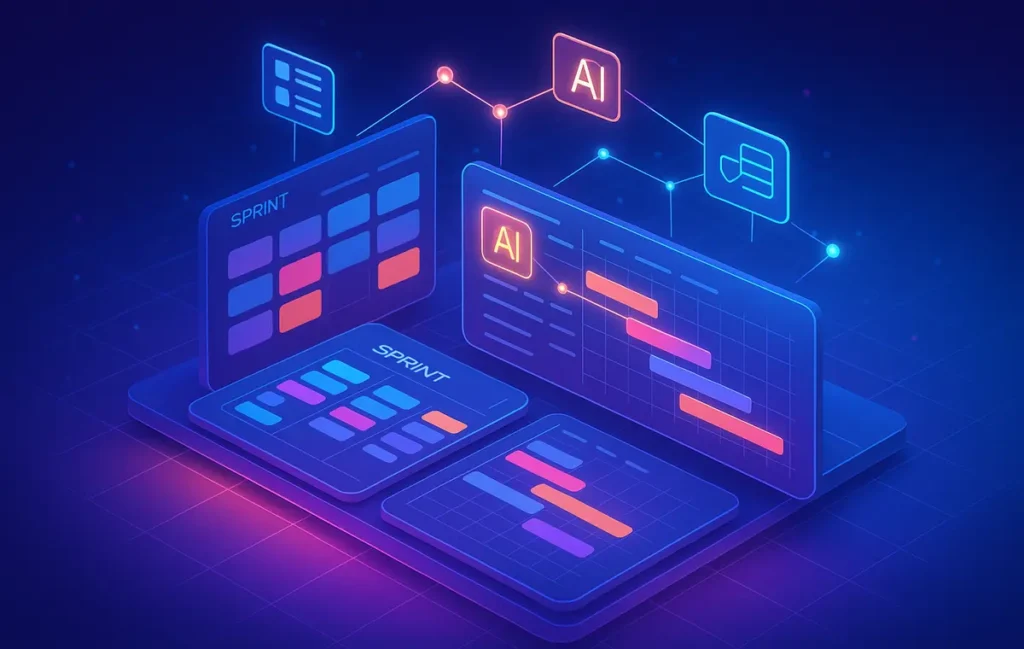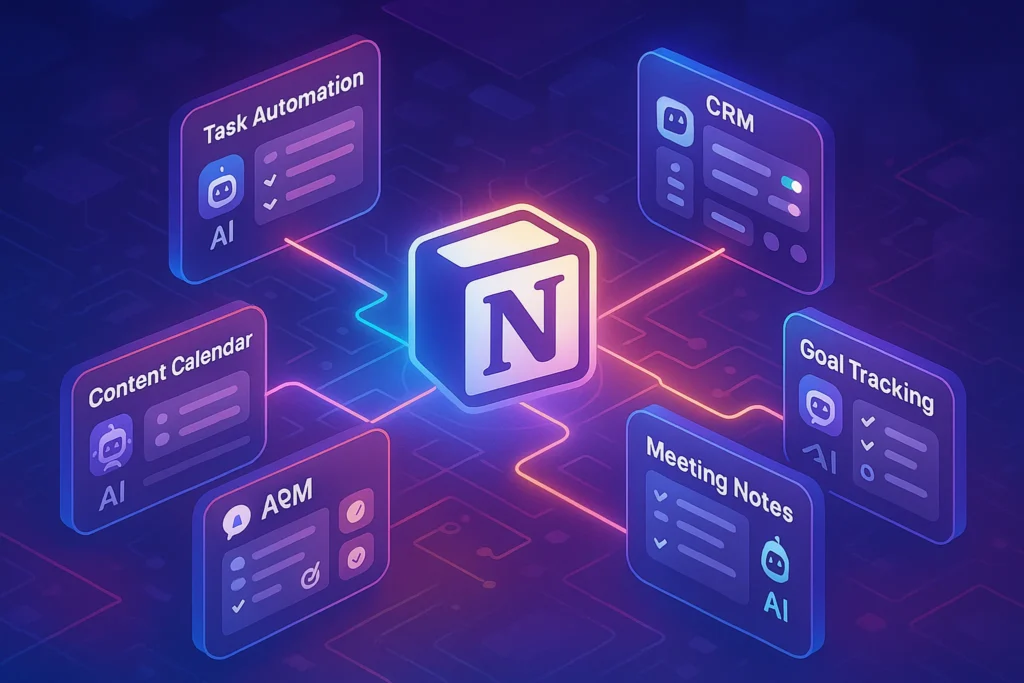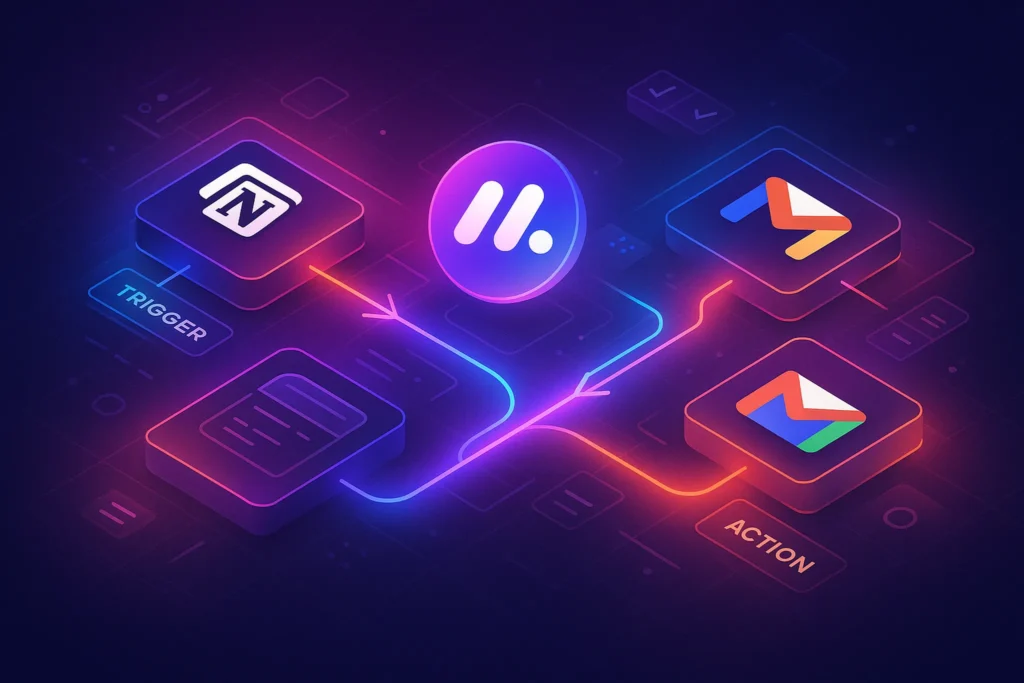🌍 Why Task Management for Teams Looks Different in 2025
Task management has evolved far beyond simple to-do lists. In today’s fast-paced digital work environment, teams don’t just need a way to assign tasks—they need clarity on roadmaps, transparency in sprint planning, and flexibility to adapt when priorities shift. Agile and Kanban boards are no longer niche frameworks; they’ve become standard operating models across industries.
In 2025, AI has stepped into the spotlight. Predictive task planning, auto-prioritization, and natural language task creation are no longer “nice-to-haves”—they’re essential. A survey by Gartner reported that teams using AI-enhanced task tools see 15–20% faster sprint completions compared to traditional project setups.
💡 Nerd Tip: Think of roadmaps as your team’s North Star. Without them, sprint planning becomes firefighting instead of future-building.
At NerdChips, we’ve tested the tools that matter most. Here’s how Asana, Trello, ClickUp, Jira, Monday.com, and Notion stack up when it comes to roadmaps, sprints, and AI-driven productivity.
📌 Asana: Balanced Roadmaps with a Clear UX
Asana has always been known for its clean interface, but what makes it stand out for team planning in 2025 is its timeline-first approach. The roadmap views allow managers to align epics, initiatives, and sprint cycles in a single dashboard. The new AI prioritization feature suggests which tasks should move forward when deadlines collide—a lifesaver in complex product teams.
Real-world case: A remote startup in Berlin reported a 12% reduction in sprint overruns after integrating Asana AI with their product roadmap. This wasn’t just about automation—it was about having intelligent nudges that pushed the team to focus on what mattered most.
If your team is already exploring AI in collaboration, you’ll love our deep dive on the Best AI Tools for Remote Team Collaboration.
🗂️ Trello: Kanban Power with AI-Boosted Flow
Trello remains the king of Kanban simplicity. Drag-and-drop boards are still as intuitive as they were a decade ago, but in 2025, Trello’s new AI Flow feature analyzes card movement across boards and recommends workflow tweaks. For sprint planning, this is invaluable—it tells you where bottlenecks form before they derail your team.
A community manager on X shared:
“Our team used to drown in backlog creep. Trello AI flagged stagnant cards automatically, saving us from sprint chaos.”
While Trello lacks the depth of Jira or ClickUp in handling complex multi-sprint projects, it remains unbeatable for lean teams who want visual clarity with minimal onboarding friction.
⚡ ClickUp: The All-in-One Powerhouse
ClickUp has aggressively positioned itself as the “everything app” for teams—and with good reason. From Kanban to Gantt to full-blown Agile sprint boards, it offers flexibility unmatched by most competitors. The AI assistant (ClickUp Brain) auto-summarizes sprint retrospectives and drafts sprint goals based on backlog analysis.
Teams using ClickUp for sprint planning report 20% faster backlog grooming sessions, largely because the AI highlights duplicate tasks and misaligned priorities. That means less meeting fatigue and more time actually building.
For teams who also use AI meeting assistants, check out our review of the Best AI Meeting Assistant Tools to integrate your task and meeting flows seamlessly.
🛠️ Jira: The Developer’s Backbone
Jira remains the gold standard for technical and software teams. Its roadmapping and sprint modules are designed with Agile in mind, making it the go-to for dev-heavy workflows. The new AI auto-triage system automatically assigns bug reports to the most likely responsible engineer—a feature that reduces ticket backlog chaos by up to 30% in some enterprise deployments.
However, Jira’s complexity is still its double-edged sword. While enterprise teams thrive on its detailed configuration, smaller non-technical teams may find the learning curve steep.
💡 Nerd Tip: Use Jira when you need precision. Pair it with lighter tools like Trello or Notion for non-technical departments to avoid overwhelming them.
📅 Monday.com: Visual Planning Meets Automation
Monday.com leans heavily into visual project management, making it ideal for teams that value dashboards and quick overviews. Its roadmap visualization is fluid, allowing sprint leaders to drag and realign tasks without breaking dependencies.
In 2025, Monday.com introduced AI-powered “effort forecasting,” which predicts how many story points a team can realistically handle in the next sprint. A marketing team reported that using Monday’s AI forecast cut down their overcommitted sprints by 40%, preventing burnout.
For creative teams juggling brainstorming alongside task management, pairing Monday.com with the Best AI Tools to Supercharge Remote Brainstorming creates a productive synergy.
🧩 Notion Projects: Agile Meets Knowledge Hub
Notion has matured into more than a note-taking app. With Notion Projects, teams can now create Kanban boards, sprints, and even link them directly to their knowledge base. This creates a single source of truth—roadmaps, sprint goals, and documentation live in one ecosystem.
The AI integration feels native. Notion AI suggests task descriptions, breaks down epics into sprint-sized chunks, and even summarizes sprint reports into digestible insights for stakeholders.
One product designer noted:
“With Notion Projects, our sprint recaps are auto-generated. Stakeholders actually read them now.”
If you’re curious about Notion’s roots, we’ve explored it in our post on The 7 Best Team Note-Taking Apps—it’s a fascinating evolution.
🧠 AI in Task Management: What Teams Should Expect Next
By 2025, task management AI has become predictive rather than reactive. Tools now anticipate risks—missed deadlines, overcommitted sprints, resource bottlenecks—before they happen. The challenge? AI sometimes misfires. “Hallucinated” task priorities can lead teams astray, especially when context is missing.
This is why sprint planning should never be left entirely to automation. Human oversight is key, but AI should handle the heavy lifting—reminders, summaries, predictions. Think of it as co-pilot mode, not autopilot.
For marketers building long campaigns, tools like these integrate seamlessly with AI writers. Our breakdown of the Best AI Writer Tools for Digital Marketers shows how to close the loop between content creation and task execution.
⚡ Ready to Build Smarter Workflows?
Explore AI workflow builders like HARPA AI, Zapier AI, and n8n plugins. Start automating in minutes—no coding, just creativity.
📊 Benchmark Data: How Teams Perform with AI-Enhanced Tools
Numbers matter. In 2025, independent surveys and in-house case studies highlight measurable gains from AI-enhanced task tools. Teams running ClickUp Brain, for example, report 20% faster backlog grooming sessions, mainly because the AI eliminates duplicates and highlights priority conflicts before sprint planning begins. Jira’s new AI triage tool reduces bug reassignment time by 30%, keeping developers focused on building rather than firefighting.
Marketing and creative departments have also noticed tangible improvements. Monday.com’s effort-forecasting AI cut overcommitment rates by 40%, preventing campaign burnout and allowing teams to consistently meet deadlines. Even smaller startups using Asana’s timeline prioritization AI say they’ve seen 12% fewer sprint overruns within three months of adoption.
These aren’t marginal improvements—they’re proof that AI features are no longer shiny add-ons but core levers of productivity.
📐 Mini Comparison Table: Roadmaps, Sprints, and AI Features
| Tool | Roadmap Strength | Sprint Planning Depth | AI Feature Highlight |
|---|---|---|---|
| Asana | Clear timelines, great for cross-department visibility | Balanced sprint boards for hybrid teams | AI auto-prioritization when deadlines collide |
| Trello | Light roadmap visualization, Kanban-first | Simple, flexible, but limited multi-sprint tools | AI Flow detects bottlenecks in card movement |
| ClickUp | Highly flexible, Gantt + Kanban + Agile | Strong sprint management with customizable workflows | ClickUp Brain for summaries & backlog grooming |
| Jira | Enterprise-level roadmap clarity | Deep Agile sprint modules, dev-focused | AI bug triage and backlog assignment |
| Monday.com | Visual-first, drag-and-drop roadmaps | Strong for marketing & cross-functional sprints | AI effort forecasting for sprint capacity |
| Notion Projects | Unified with docs & knowledge hub | Sprint boards tied directly to wikis | AI task breakdown & sprint recap summaries |
💡 Nerd Tip: Use the table as a starting point, then ask: Does your team need simplicity, or depth?
🎯 Case Study Vignette: From Chaos to Clarity
A SaaS startup in Amsterdam with 12 team members struggled to manage growth. They were running marketing campaigns in Trello and software development in spreadsheets. Deadlines slipped, sprints rolled over, and frustration mounted. After migrating their dev workflow to Jira and marketing to Monday.com, they cut sprint rollovers from four per quarter to just one.
The turning point wasn’t just the tools—it was the AI features that flagged overloaded sprints before they collapsed. As the CTO put it:
“AI became our project coach. It didn’t replace us, but it gave us the warnings we’d been blind to.”
This illustrates that right-fit tools plus AI nudges can transform a team’s velocity, even without hiring more people.
⚖️ Hidden Costs and Trade-offs
Choosing the best task management tool isn’t just about features—it’s about hidden costs. Jira offers unmatched depth for developers but demands steep onboarding and higher license fees, which may strain small teams. Trello’s simplicity is perfect for quick adoption, but it often cracks under the weight of multi-sprint complexity.
ClickUp consolidates multiple apps into one, but some teams report decision fatigue from too many features. Monday.com shines in visuals and AI predictions, yet scaling large enterprise-level sprints can quickly push up subscription costs. Notion Projects reduces tool sprawl, but developers still miss integrations that are native to Jira.
The trade-off is clear: each tool asks you to balance power vs. simplicity, cost vs. flexibility, onboarding vs. scale. Teams that acknowledge these trade-offs upfront are less likely to churn tools later.
🔮 AI in Task Management: The Next 3 Years
The AI features we see today—prioritization, summarization, effort forecasting—are only the beginning. Within the next three years, expect Agentic AI that can auto-generate sprint plans based on company goals, not just backlog items. Kanban boards will self-optimize, reordering cards dynamically as team velocity changes.
We’ll also see task managers integrate directly with AI-powered note-taking and meeting tools: imagine a transcript from your brainstorming session automatically converted into a sprint backlog. This seamless bridge between ideation and execution is already taking shape in experimental features from Notion and ClickUp.
💡 Nerd Tip: Don’t just adopt AI tools for today. Choose platforms investing in agentic AI, because they’ll future-proof your workflow.
✅ Team Fit Checklist: Matching Tools to Team DNA
Every team has a DNA. Task management software should complement that DNA, not fight against it.
If your team is developer-heavy, Jira is still the backbone. Its Agile sprint depth and bug triage AI make it indispensable. For creative or marketing-driven teams, Monday.com and Notion Projects provide the visual dashboards and knowledge hubs that keep campaigns on track.
If your team values simplicity and speed, Trello shines. It’s lightweight, Kanban-first, and its AI Flow prevents backlog creep. Asana hits the sweet spot for cross-departmental teams, offering roadmaps clear enough for executives and sprint boards actionable enough for squads. ClickUp, meanwhile, is ideal for hybrid or fast-scaling teams who want everything in one place—at the cost of a steeper learning curve.
💡 Nerd Tip: Don’t chase “the best tool overall.” Chase the tool that fits your team’s rhythm.
📬 Want More Smart AI Tips Like This?
Join our free newsletter and get weekly insights on AI tools, no-code apps, and future tech—delivered straight to your inbox. No fluff. Just high-quality content for creators, founders, and future builders.
🔐 100% privacy. No noise. Just value-packed content tips from NerdChips.
🧠 Nerd Verdict
Task management in 2025 is no longer about assigning work—it’s about building a narrative of progress. Roadmaps align vision, sprints bring rhythm, and AI adds the predictive edge teams need to stay ahead.
The tools covered—Asana, Trello, ClickUp, Jira, Monday.com, and Notion—each shine in different contexts. What matters most is how they’re woven into your workflow. Lean teams might thrive on Trello’s simplicity, developers may never leave Jira, and creative teams find their hub in Notion or Monday.com.
At NerdChips, our take is simple: choose the tool that aligns with your team’s maturity, but don’t ignore AI features—they’re no longer optional.
❓ FAQ: Nerds Ask, We Answer
💬 Would You Bite?
If your team could eliminate 20% of sprint waste through AI-powered planning, would you trust the algorithms—or stick with manual roadmaps?
Crafted by NerdChips for creators and teams who want their best ideas to travel the world.



